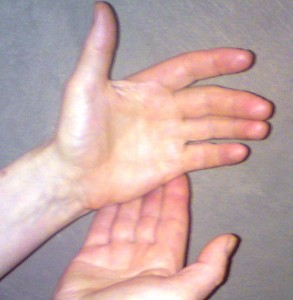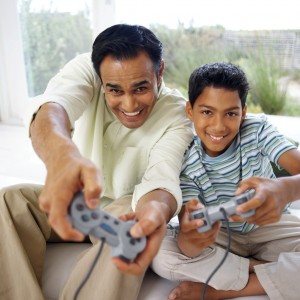 Separation can be a difficult time for everyone, but the effects on children can be profound and long lasting, particularly when there is conflict between the parents.
Separation can be a difficult time for everyone, but the effects on children can be profound and long lasting, particularly when there is conflict between the parents.
Children are delicate and sensitive beings. They naturally love and identify with both parents, and have a right to do so. When their basic family unit is shattered, so too is the child’s sense of the world as stable and consistant. They grieve their family, desperately miss which ever parent they are not with, and fear that they could lose everyone in their life at any moment. Sadly, on top of this they often lose their pattern of contact with grandparents and extended family, and they might even have to move home and school, so lose friends and teachers. So it’s not surprising that all this can feel overwhelming, confusing and distressing for children.
Add to that mix ongoing conflict between the parents, and you have far more than most children can cope with.
MINI DOUBLE AGENT
Imagine the situation. You are a child and you are living with one parent following a separation, let’s say it’s your mother. You really miss your Dad, and you want to see him, but you know your mother hates him. You know that from the way she and your father argue, and from what you overhear her telling her friends and family. You love your Mom and naturally want to be loyal to her and do what she wants. If she hates your Dad, then she would want you to feel the same way.
You hate the tension and arguments that happen every time you see Dad. Often these arguments are about you: how dirty you’re clothes are, how much you’ve had to eat, what time you are collected or returned, whether or not you can go to a birthday party, who has you for the holidays, and, of course, child support money. You feel somehow responsible.
You want to help your Mom when you see how upset she is after an argument, so you tell her you don’t want to see Dad again. You even think of bad things to say about your father or his family to please your mother, particularly if she digs for them. After all, you and your Mom are a team, a battalion, and he is the enemy. It’s the right thing to do.
But then you think about your Dad and feel really guilty for being disloyal to him. You miss him and want to see him, but you can’t tell Mom that, it would only upset her. You feel like a double agent and it is all so confusing.
If you are forced to go on contact visit, you feel like you are climbing under the enemy lines and dodging bullets from both sides. You protest, of course. But once you are safely on the other side, out of the conflict zone, you relax and begin to have a great time with your Dad and his family. You’d almost forgotten how much you loved them, and what fun your Dad was, and how great your grandmother’s cooking was. But all these warm feelings just increase your confusion and guilt about the bad things you said to your mother. So you make up for it by telling Dad something bad about Mum. You are are team, after all, a battalion, and now she is the enemy….
No wonder being exposed to parental wars screws up kids.
HELPING YOUR CHILDREN COPE WITH SEPARATION CONFLICT
Children feel most comfortable when parents are on the same team saying the same thing. When you separate, or are about to separate, it is important to give your children a sense of this team work. They need to know that, even though you are living apart, you are still working together as their parents and want what is best for them.
HOW TO TELL YOUR CHILDREN ABOUT SEPARATION
It’s best to stand together and tell them that Mom and Dad are separating, but that you both still love them and will continue to see them and be their Mom and Dad. Children often feel responsible for their parent separation, so it is important to assure them that it had nothing to do with anything they said or did.
There is no need to tell your children who is responsible for the separation and why. Soiling their view of the other parent only confuses them and and hurts their self esteem. And besides, it is just your view. You normally protect them from information about the sexual side of your relationship because it’s inappropriate for them and they don’t have the maturity to digest it properly. By the same token you should protect them from information about the separation and any ongoing issues.
BE LIKE THE FRUIT GROCER
Try to be hospitable towards each other in front of your children. That doesn’t mean you should spend a lot of time in each other’s company following a separation. Quite the opposite. The more time you are together when you are still in the grief and anger stage, the more chance you have of pushing each other’s raw, exposed buttons.
Diplomacy is the key. Keep access changovers friendly, but brief, and stick to the business at hand: that is, the children. Let the other parent know of illnesses and injuries and, of course positive experiences, but there’s no need for a lot of detail and you must avoid indulging in negative emotions.
I often equate this to the interaction you might have with your local fruit grocer. Ideally you smile and say hello, then ask how crunchy the apples are today. He replies in a friendly tone that the green apples are great this week. You buy a bag and leave, with a friendly thank you and good bye. You don’t spend long hanging around, you don’t talk about personal things, you don’t go into the owner’s private area out the back, and you certainly are not rude and critical. Keep it brief, friendly and simple.
MEDIATION CAN HELP
Try to stick to agreed plans for contact visits, but be flexible if possible when it’s important for the child, and communicate clearly about arrangements and your child between visits. If you are have difficulty negotiating arrangements without arguing, bring in a professional mediator to help.
Try to protect your child from negative comments about the other parent from you and your friends and family. Encourage your child to have a positive relationship and positive feelings about the other parent and their family, even if your child says that the other parent has been negative about you or your family. Remember, they might want to ‘shoot’ the other side to show their loyalty to you, and, even if your child is telling the truth, two wrongs definitely do not make a right. If you do think the other parent is continuing to be negative about you, or is rude and aggressive at contact changovers, invite them to joint counselling or therapeutic mediation with a quality child focused service.
The bottom line is, children have a right to have a loyal, positive, loving relationship with both parents, without guilt and stress. Do your best to help yours achieve that, and try not to let your own feelings get in the way. If you are finding this difficult, find a professional counsellor to help you cope.
MORE FROM ME
Good luck with this. I would love to hear your questions and comments. Leave them in the box below, or, if you prefer, you could send me a private email at Lorri@lorricraig.com, and I’ll do my best to respond quickly.
Also, I am releasing a series of training videos for parents soon called, How to Manage Your 3 to 10 Year Old Child. If you are interested in the prelaunch super discount, please put your first name and email address in the box on the right.
Happy parenting,
Lorri Craig





